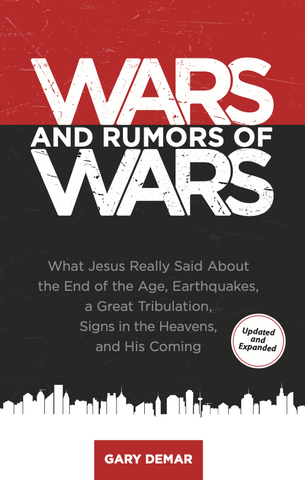Gary concludes his response to his critics with this episode.
What about Revelation 1:7 which states, “BEHOLD, HE IS COMING WITH THE CLOUDS, and every eye will see Him” (cf. Isaiah 40:5), even those who pierced Him; and all the tribes of the land will mourn over Him”? The fact that “those who pierced Him” would see this event take place, we must conclude that what was revealed to John was about events in his day. The people who pierced Jesus are long dead. John wrote that Zechariah 12:10 had been fulfilled at the crucifixion: “And again another Scripture says, ‘THEY SHALL LOOK ON HIM WHOM THEY PIERCED’” (John 19:37). Like we saw in Matthew 24:30, it’s the “tribes of the land,” that is, the tribes of Israel, that are in view. The reader will note that Revelation begins with a statement of what will take place “shortly” (1:1) because “the time is near” (1:3).
Kenneth Gentry, in his two-volume commentary on Revelation, bases his commentary solidly on a preterist interpretation from this verse. Here are two paragraphs from his 26-page discussion of Revelation 1:7:
While expounding on Matthew 24:30 (the parallel to Rev 1:7), Tasker comments: “The reference is to the conditions prevailing when Jerusalem was being attacked,” which leads him to argue that “the translation should be ‘all the tribes of the land’ …, i.e. the land of Judaea (cf. Zc. xii. 12).” [R. V. G. Tasker, The Gospel according to St. Matthew, TNTC (Grand Rapids: Eerdmans, 1961), 230.] France (2007: 925n) and Gibbs (2000: 199-201) concur. NIDNTT 1:518 agrees: “pasai hai phylai tes ges (Matt. 24:30; Rev. 1:7) means in the setting of Zech. 12:10-14 ‘all the tribes of the land.’” The fact that Jesus urged those in Judea to flee (Mt 24:16) strongly supports this interpretation. Thus, Revelation 1:7 focuses on the same area in the same era, which must be the Land of Israel in AD 70.
Now remarkably for our purposes, both prophecies are also expressly linked to near-term events. John insists his Revelation prophecies “must soon come to pass” (1:1; 22:6), “for the time is near” (1:3; 22:10). In Matthew, the Olivet Discourse is immediately preceded by Christ’s denunciation of the then-standing temple (Mt 23:38) when the disciples pointed out its beauty (Mt 24:1). Jesus responded to their wonder by stating: “Do you not see all these things? Truly I say to you, not one stone here will be left upon another, which will not be torn down” (Mt 24:2). This prophecy was fulfilled in AD 70. [1]
As in Matthew 23, it was those of that generation, and that generation alone, who were described as “sons of those who murdered the prophets” who would “fill up … the measure of the guilt of [their] fathers” (vv. 31-32), not some distant generation that had no direct hand in the crucifixion of Jesus. It was the representatives of that generation that pronounced a curse upon themselves and their children: “And all the people said, ‘His blood shall be on us and on our children!’” (Matt. 27:25). To top it off, when Pilate offered to release Jesus, their true king, they shouted, “We have no king but Caesar” (John 19:14-15).

Wars and Rumors of Wars
A first-century interpretation of the Olivet Discourse was once common in commentaries and narrative-style books that describe the fall of Jerusalem in AD 70. There is also a history of skeptics who turn to Bible prophecy and claim Jesus was wrong about the timing of His coming at ‘the end of the age’ and the signs associated with it. A mountain of scholarship shows that the prophecy given by Jesus was fulfilled in exacting detail when He said it would: before the generation of those to whom He was speaking passed away.
Buy NowGary concludes his response to his critics with this episode. He discusses some interesting background information about a few of those demanding answers from him, as well as the Nicene Creed, and a few passages regarding resurrection. In the end, his appeal is the same: the Church needs an ecumenical council on eschatology, similar to what happened in early church history over the humanity and divinity of Jesus.
Click here for today’s episode
Click here to browse all episodes of The Gary DeMar Podcast
All five response episodes in order:
Christianity Today article about book endorsements
What Gary Believed and Argued 25 Years Ago
[1] Kenneth L. Gentry, Jr., The Divorce of Israel: Redemptive-Historical Interpretation of Revelation, 2 vols. (Dallas, GA: Tolle Lege Press, 2023), 1:319.

